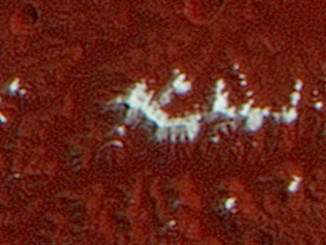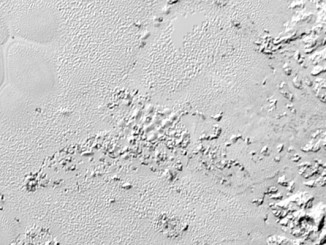
What’s eating at Pluto?
Far in the dwarf planet’s western hemisphere, scientists on NASA’s New Horizons mission have discovered what looks like a giant “bite mark” on Pluto’s surface. They suspect that the methane ice-rich surface on Pluto may be sublimating away into the atmosphere, exposing a layer of water-ice underneath.









